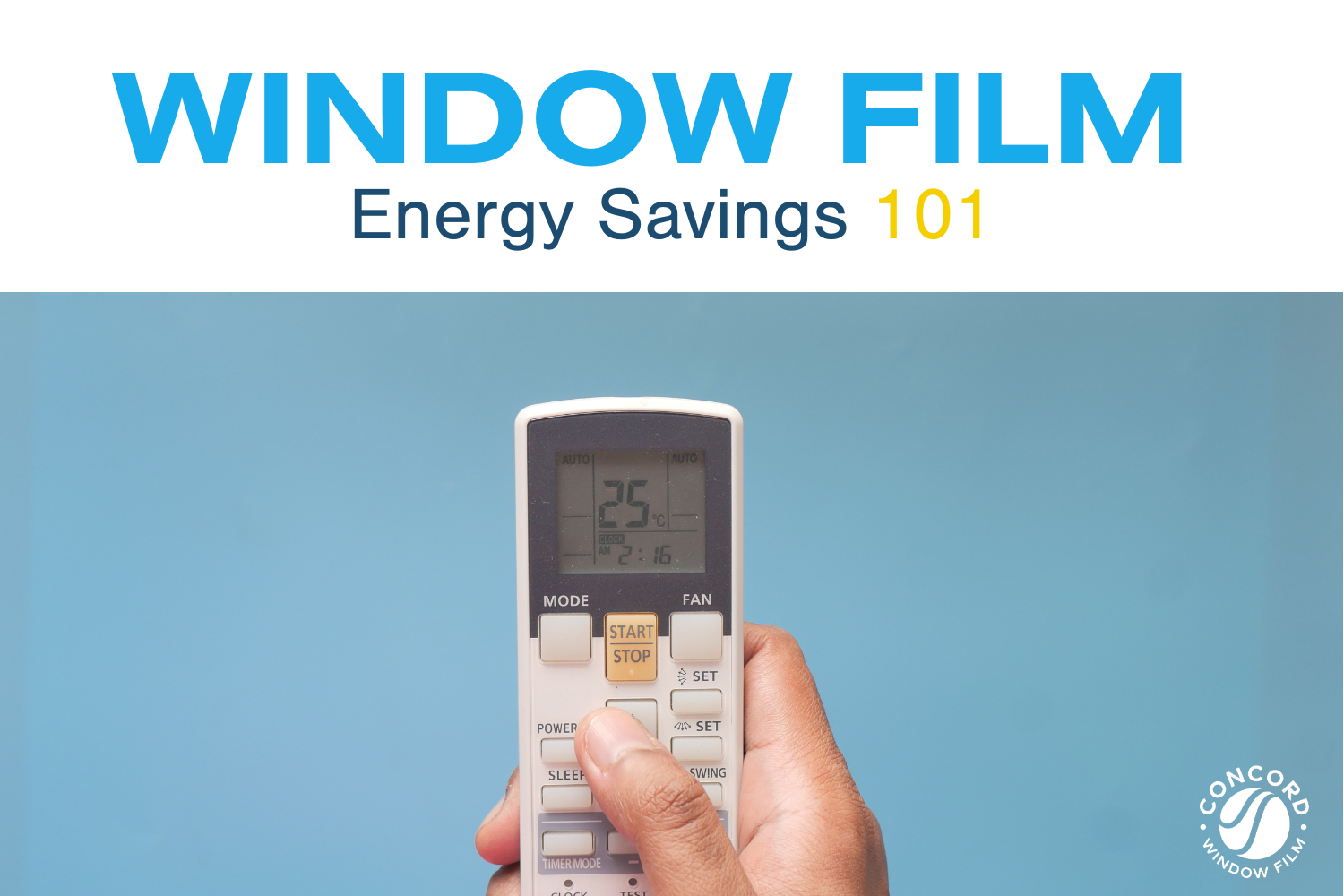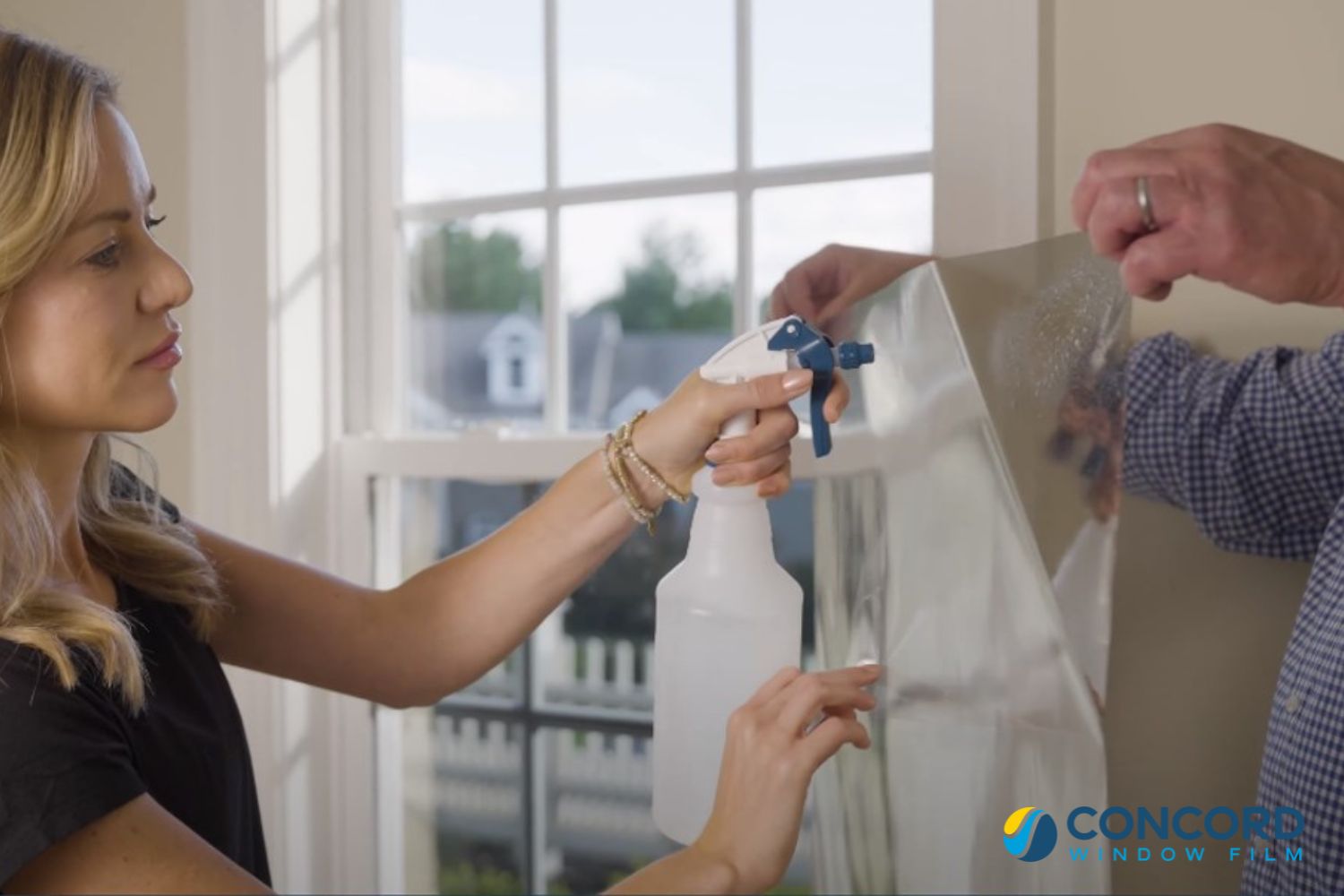
FREE SHIPPING ON PRECUT KIT ORDERS OF $100 OR MORE

We talk a lot about dry adhesive here at Concord Window Film, because it’s the type of adhesive we use on our flagship product: ComforTech™ Ceramic Series window film. But you may be wondering does it matter?
Let’s find out if dry adhesive window film really is better:
Dry adhesive is a special type of adhesive commonly used in the installation of window films, particularly for residential and commercial applications.
Unlike other adhesive types, dry adhesive is not initially tacky to the touch. In fact when you expose the adhesive side of the film, you may not be able to tell there is an adhesive on it at all.
Dry adhesives are activated by water and when activated and applied to a glass surface, the adhesives cure and form a chemical bond with the glass. The curing time can take up to 30 days to complete depending on weather conditions.
The result is a very clear finish that is long-lasting and strong.
The other major type of adhesive used in professional window films is what is called a pressure sensitive adhesive. A pressure sensitive adhesive is sticky when the adhesive is exposed (think Scotch tape). This type of adhesive is used on lower cost films in the residential window film market, but is the preferred adhesive for automotive applications because of the curved nature of the glass and the need to stick quickly.
Read an overview of all window tint adhesive types here. And if you want to go into a deep dive into how adhesives work in general, read this.
Because the film is not sticky when the liner is removed, it makes it easier to handle the film during installation, as it only activates and adheres firmly over time when cured. This method reduces the risk of air bubbles and wrinkles, common challenges in window film installation.
Moreover, window films with dry adhesive are often easier to remove or reposition than those with pressure-sensitive adhesives during installation. This attribute is especially beneficial for DIY homeowners who may need flexibility during installation.
Another advantage of dry adhesive is its clarity. Once activated and set, it becomes virtually invisible, maintaining the film’s aesthetic appeal and not obstructing the view through the glass. This feature is particularly important for films used for solar control, privacy, or UV blocking purposes, where clarity and unobstructed views are desirable.
In addition, because it isn’t sticky, there is less of a chance of dust or other particles contaminating the film during the installation process.
The dry adhesive technology is designed to create a strong bond between the film and the glass surface without the complexity associated with PS adhesives. When you apply the film to the window and squeegee it in place a chemical reaction begins that bonds the film to the glass, ensuring a secure and long-lasting hold.
In summary, dry adhesive offers a user-friendly, efficient, and aesthetically pleasing solution for installing various types of window films, making it an ideal choice for DIY projects and professional installations alike.
Concord Window Film’s flagship product, ComforTech™ Ceramic Series Film uses dry adhesive technology.
For more information on window film adhesives and installation techniques, visit windowfilm.com.